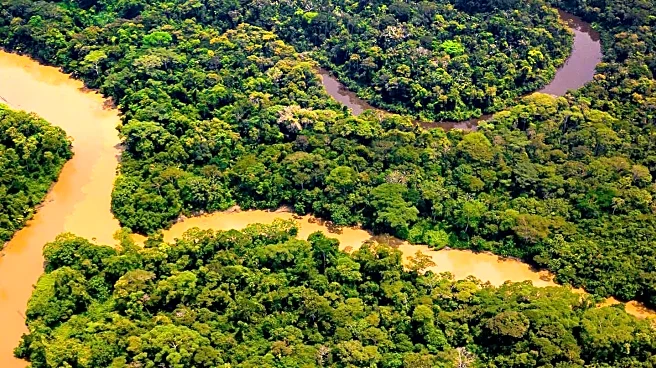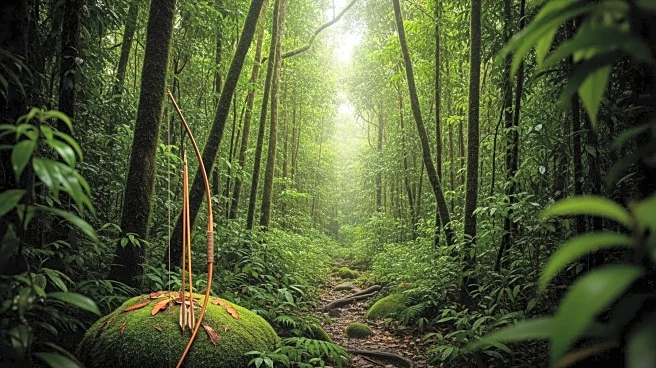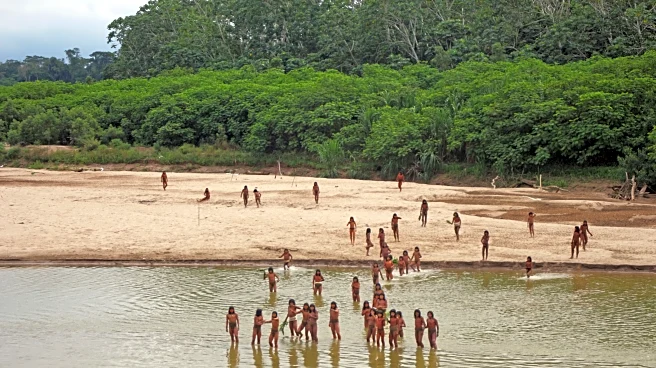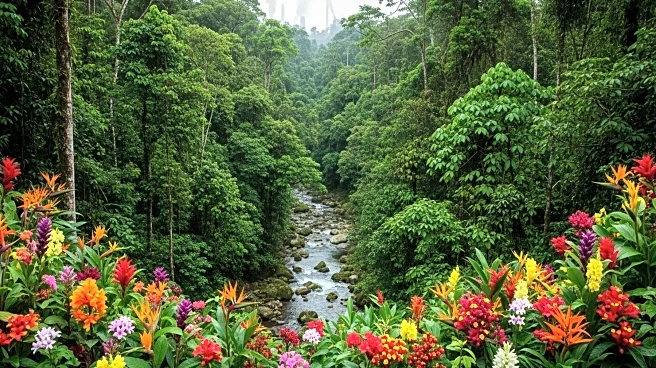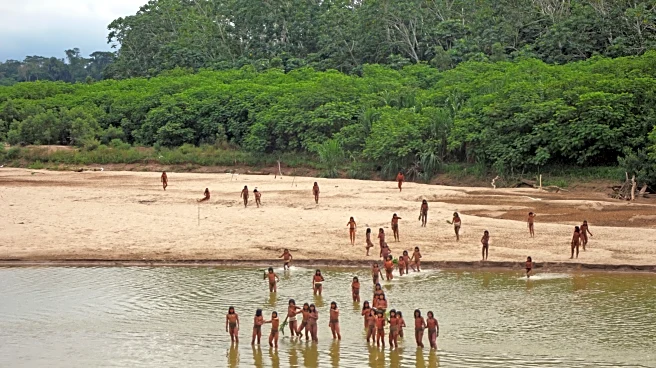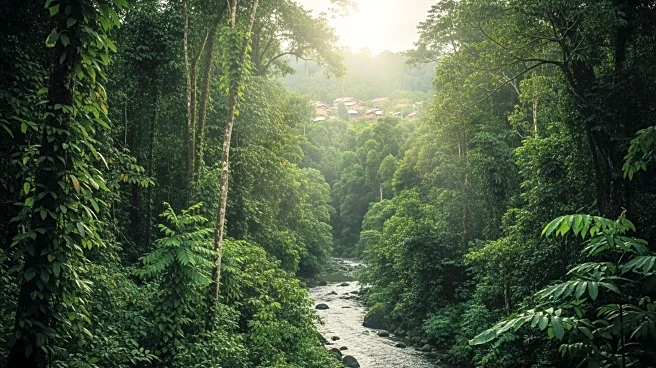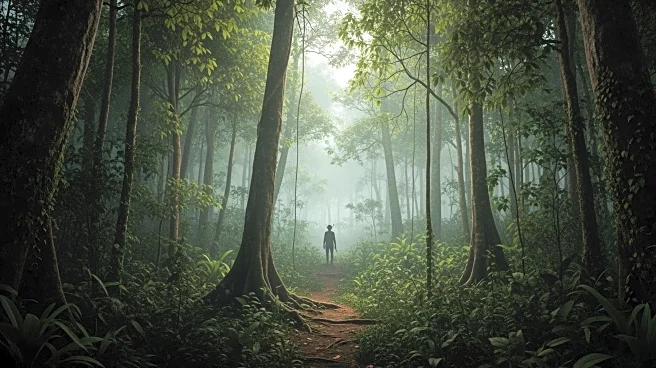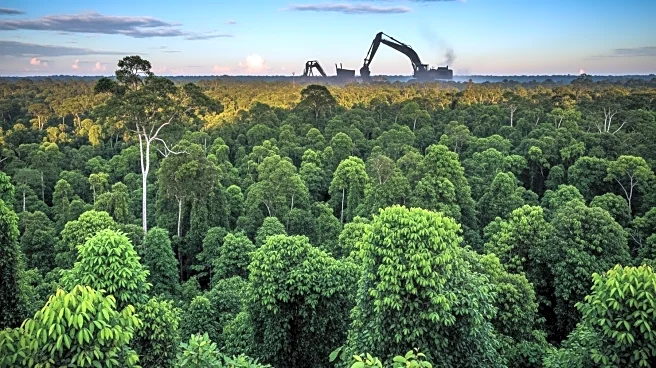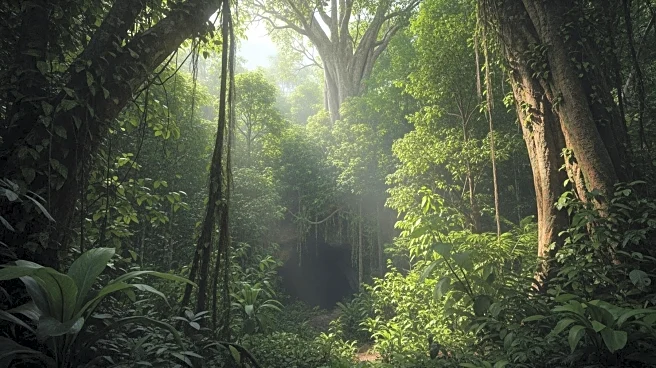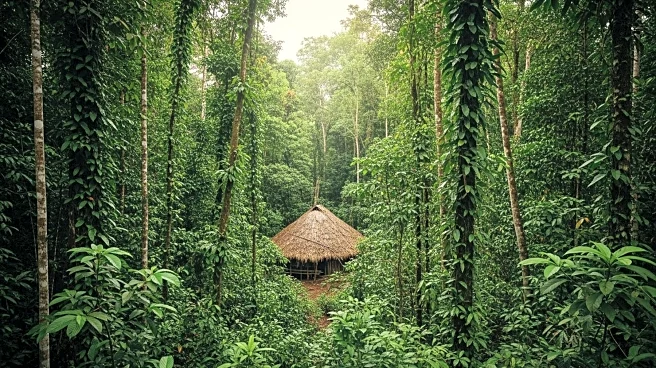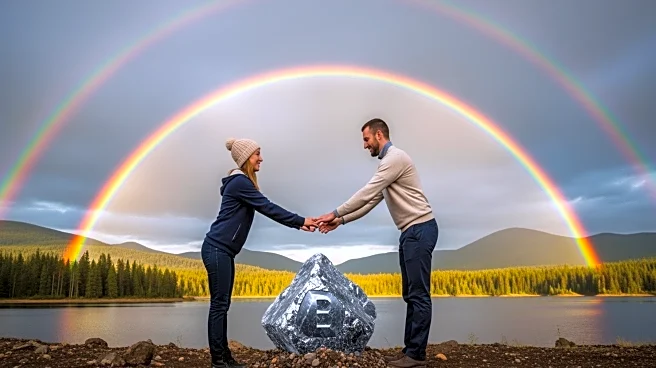What's Happening?
A new report from Survival International, an Indigenous rights organization based in London, has highlighted the growing threats faced by uncontacted Indigenous tribes worldwide. The report identifies
at least 196 such groups, with half potentially facing extinction within the next decade. These tribes, primarily located in the Amazon Basin, particularly in Brazil, are self-sufficient and have chosen to remain isolated from external contact. However, increasing encroachment by missionaries, miners, criminal gangs, and social media influencers is posing significant risks. These external forces are not only threatening the tribes' natural resources but also introducing diseases that could devastate entire communities.
Why It's Important?
The survival of uncontacted Indigenous tribes is crucial for preserving cultural diversity and ecological knowledge. These communities are experts in sustainable living, drawing all necessities from their environment. The threats they face from external contact could lead to the loss of invaluable cultural heritage and traditional ecological practices. Furthermore, the exploitation of their lands for resources poses ethical and legal challenges, as international law mandates free, prior, and informed consent for activities on Indigenous land. The potential extinction of these tribes would represent a significant loss to global cultural and ecological diversity.
What's Next?
Efforts to protect these tribes may involve stricter enforcement of international laws regarding Indigenous land rights and increased awareness campaigns to highlight their plight. Governments and international organizations might need to collaborate to ensure these communities are shielded from external threats. Additionally, there could be a push for more comprehensive policies that respect the autonomy and choices of these tribes, while safeguarding their environments from exploitation.
Beyond the Headlines
The situation of uncontacted tribes raises broader ethical questions about the rights of Indigenous peoples to remain isolated and the responsibilities of governments and societies to protect these rights. It also highlights the tension between development and conservation, as resource-rich lands are often targeted for exploitation. Long-term, this could lead to shifts in international policy regarding Indigenous rights and environmental conservation.
